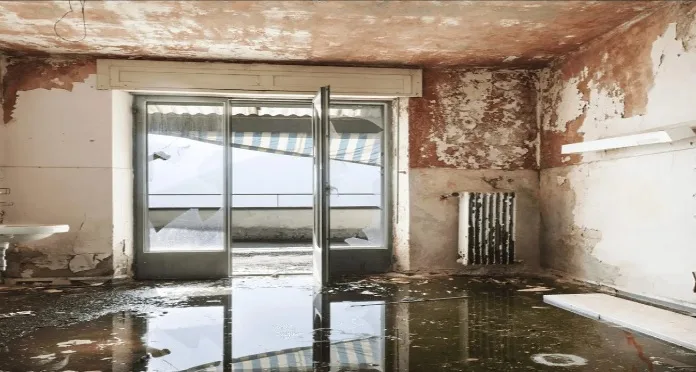When you hear the term “water damage,” several potential issues might spring to your mind. You might picture a dwelling devastated by a natural disaster, like a heavy storm or flood. Alternatively, it could be on a smaller scale—a burst pipe causing an isolated but significant issue. However, water damage is not just limited to these circumstances. Understanding this is essential because water damage can impact any building or structure regardless of its age or location.
Water Damage Restoration Overview
In the event of water damage Las Vegas , the immediate action taken towards remediation can mean the difference between a minor fix and a massive undertaking. This phase is where your water damage specialist comes into play. The Water Damage Specialist uses their expertise to identify and mitigate water-related problems as swiftly as possible, reducing overall harm and preventing further deterioration from mold growth or structural weakening.
Linking Construction Planning and Restoration
Historically, construction planning and water damage restoration have been two separate aspects linked primarily during crises such as floods or following severe weather events. However, integrating both aspects from the onset offers a better opportunity for protecting structures against future water damages.
Integrating Restoration in Construction Phases
Modern construction methods now incorporate elements of restoration in every phase—from designing to actual construction and inspection post-construction. This approach avoids costly repairs later on and maintains structural integrity over time.
During design stages, detailed consideration is given to aspects including but not limited to site location, material selection, architectural features—everything aimed at minimizing risk of future water damage. In-built measures like appropriate drainage systems are incorporated into the plan so they blend seamlessly with the aesthetics while offering functional benefits.
Water Damage Prevention Measures
Prevention has long been known as better than cure; the same holds true in scenarios involving potential water damaging incidents. Right-sized gutters and downspouts that divert rainwater well away from the base of your house are worthwhile additions that aid in keeping basements dry.
Installing sump pumps, giving attention to landscaping slope (for flowing away excess rainwater), vigilantly addressing gaps/space around windows or doors – all these are preventive measures that go a long way.
Restoration Techniques for Builders
Builders today equip themselves frequently with restoration techniques dealing specifically with types of potential water damage situations—they completely understand how spillage of even minute amounts might harm specific materials differently (for instance wooden floors vs concrete ones).
Impact on Cost and Timing
Understandingly incorporating restoration plans within initial construction phases might slightly elevate costs upfront but these are well justified looking at potential high cost repairs otherwise one may face later on due to lack of such precautions early on.
Case study: Successful Integration
A housing complex exemplifying successful integration of modern construction planning coupled with preventive restoration techniques experienced its first winter many expected heavy damages owing largely to snowfall predicted; however thanks to forward thinking & detailed attention during early planning stages by incorporating all right elements.
The implementation of comprehensive gutter systems and strategic sloping landscape design played a vital role in preventing substantial financial losses. When the snow began to melt post-winter, these measures effectively safeguarded homes from potential flooding threats and consequential damage.
Potential Challenges and Solutions
Despite expected advantages inherent challenges exist too—for some retrofitting old buildings using current knowledge about integrated planning may seem daunting; fortunately development & accessibility to specialized tools/equipment by builders for identifying hidden moisture amongst other things has replaced the need for major demolition works making the process less intimidating than previously thought.
Future Trends in Construction-Planning
Experts predict an upward trend in adopting more eco-friendly methods besides traditional ones for both construction as well as restoration process—“Green” buildings crafted using sustainable materials coupled with advanced prevention/restoration planning will soon become the new normal thereby signaling a brighter environmentally friendly era ahead within the industry landscape!
Mitigating Future Risks with Intelligent Planning
While prediction of all future events is impossible, intelligent planning mitigates a vast number of uncertainties. Incorporation of advanced restoration techniques in construction planning helps secure your buildings from potentially catastrophic water damage.
Understanding and Overcoming Challenges
As we’ve learned, integrating these methodologies isn’t always straightforward and presents challenges—especially for older, existing structures. Yet, the industry’s rapid advancement provided us with specialized tools making the integration less intimidating and more successful. This strategic shift extends the lifespan of buildings, reduces substantial repair costs, and promotes safer living and working conditions.
In Conclusion
The inclusion of water damage restoration strategies during initial construction planning stages signifies a progressive shift towards heightened building standards. These standards guarantee long-term benefits by protecting structures from unpredictable accidents, particularly those pertaining to water damage and the ensuing complications such as mold growth.
These precautions can mitigate potential damage caused by overlooked or persistent water issues. Ultimately, this integrated approach ensures an extra layer of security and assurance for property owners, reinforcing the overall stability and resilience of their residential or commercial structures.
This progressive evolution in construction methods not only evokes peace of mind but also speaks volumes about the improved durability that comes from owning a well-built structure that is prepared for unforeseen circumstances.



